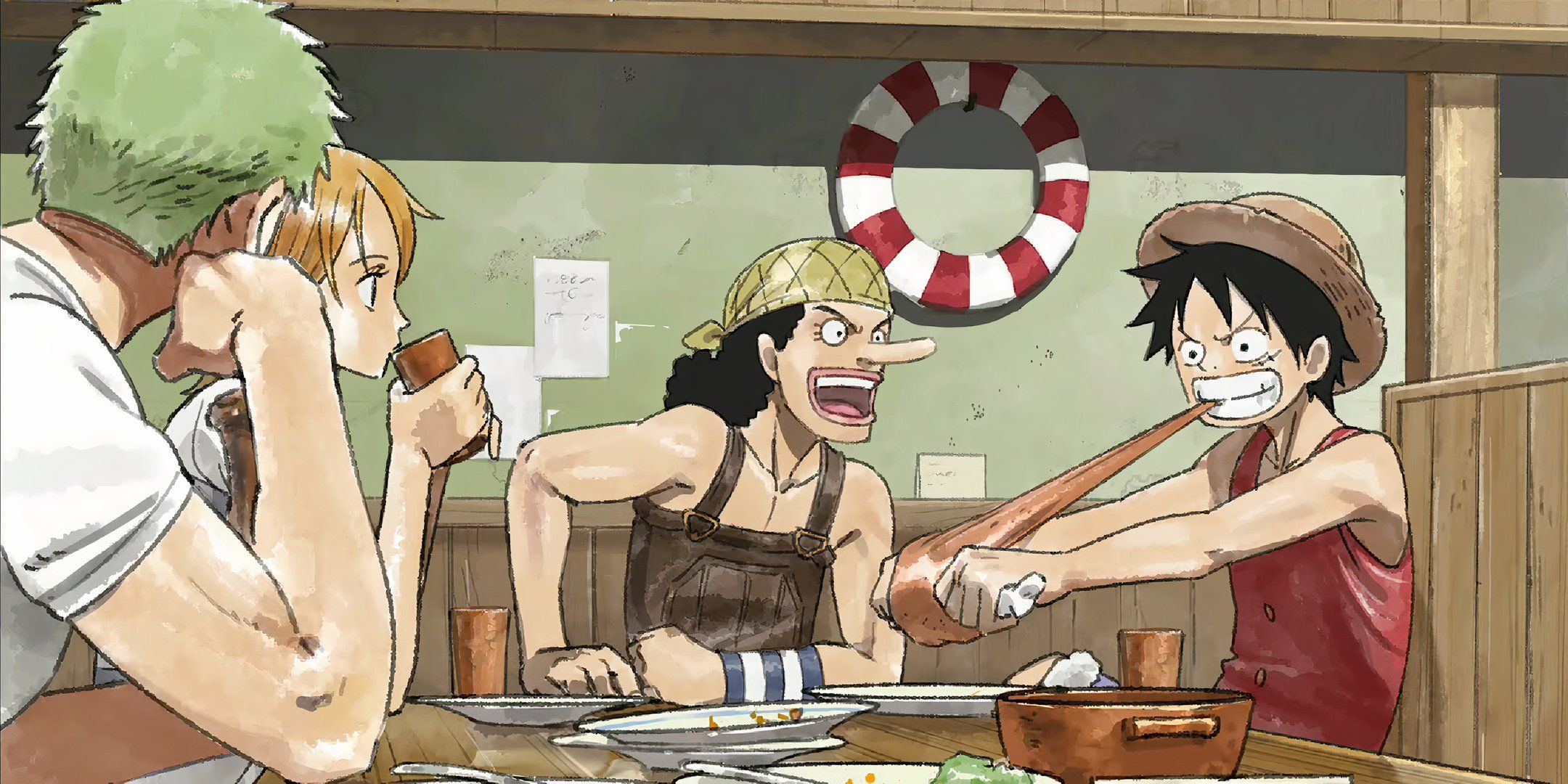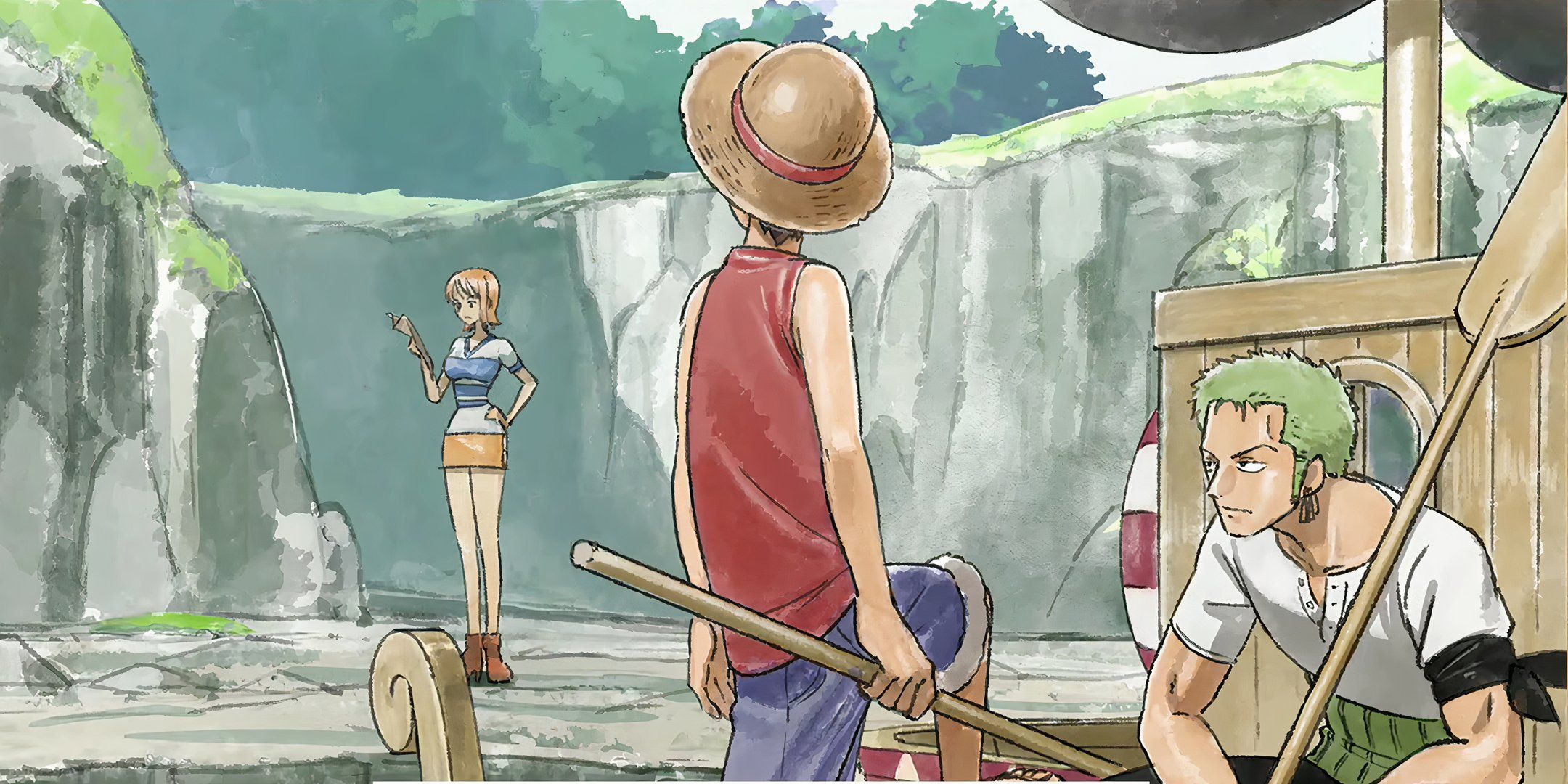One Piece is the best-selling manga of all time, with a hugely popular anime and a multimedia franchise spanning nearly thirty years, yet when it was introduced to me, it was still relatively new. I could see it plain as day that this was a cultural event developing, and I was one of the first consumers in my market to see it. However. I fell off from this series in high school, and while I rediscovered other favorites of mine, like Naruto, later in life, it was astonishing to see One Piece go a thousand chapters beyond what I’d read at the time.
The series hit North American shelves in January 2003, while continuously running in Shueisha’s Weekly Shonen Jump. The appeal of One Piece has exponentially expanded in the past twenty years, with it outlasting all other contemporaries in Weekly Shonen Jump, reigning as king of the Shonen Big Three.

Now, in its final saga, I no longer wish to miss out on the grand adventure that’s captivated the world for nearly thirty years with One Piece. It can feel intimidating to pick up a series that’s run for so long, but it’s also absolutely worth it, and I’m going to explain the reasons why I could not resist getting back into One Piece.

Related
“I Want to Continue This Forever”: One Piece’s Remake Director Hints at the Length of the New Series
The One Piece remake has a great chance of being a long-running anime, according to a recent statement by the series’ director.
Reading One Piece from the Start Is Intimidating
Binging Is an Arduous Task for 1,000 Chapters
If you’re especially serious about catching up on One Piece while supporting its release in 2024, you may sacrifice reading time for other stories.
One Piece is not the longest-running series in manga history and has nowhere near the most chapters, with Dokaben, KochiKame: Tokyo Beat Coops, Hajime no Ippo, and Baki the Grappler each having longer runs. Having previously only read up to chapter #123, I couldn’t help but feel like I was the victim of a silly cosmic joke. Reading One Piece will mean several dozen chapters a day; it’s an entertaining exercise, but try any more and numerous difficulties arise.
Reading One Piece legitimately means picking up one of over one hundred volumes of its physical media or digitally through MANGA Plus or VIZ Media’s Shonen Jump manga reader apps. For any passionate reader, this task seems reasonable, and even subscriptions for either service are incredibly reasonable. Still, there’s a hard limit on VIZ’s side at 100 chapters a day, and most back issues on MANGA Plus are a one-time-only option. If you’re especially serious about catching up on One Piece while supporting its release in 2024, you may sacrifice reading time for other stories.
I was introduced to One Piece through its manga and quickly charmed by Eiichiro Oda’s lively and wildly imaginative art style, full of endless original creations that are as instantly recognizable as the creations of the late Akira Toriyama. While the series is a smash hit anime, manga will always be my preferred medium, especially as so much of the excitement is built around major developments first laid out in print before being animated. Even in light of these limitations, I’m no stranger to a manga binge, and while I doubted it at first, One Piece seems truly worth it.
One Piece Stays Consistently Good While Becoming Great
Ignore the Benchmarks, One Piece Was Good From the Start
One of the funniest consistent responses I would get to my skepticism about getting back into One Piece is the “it gets good after (x) amount of chapters” given in the ranges of 250-300, 500, or even 800, indicating that the fan base doesn’t commonly agree on when the series gets good. My take is that it’s always been good; what people are debating is when One Piece goes from good to great, an important distinction.
Making a persuasive recommendation to get into One Piece is crucial because people can’t freely invest in hundreds of time-consuming installments before they enjoy themselves unless they know it is worth it. The truth is, Oda’s charm has always been strongly represented, even just in the Alabasta Saga with a young, wiry Roronoa Zoro, about to be encased in Mr. 3’s wax, instinctively either trying to strike a pose or cut his legs off to keep fighting. I don’t find reading hundreds of One Piece chapters bothersome because it’s hilarious and fun.
One Piece Is Far More Intriguing Beyond Its Comedy
Eiichiro Oda’s Fans Investigate Every Chapter’s Details for Clues
One thing that strikes me about the series is how passionately and intricately the readers analyze panels, forced perspectives, and intimate details of each One Piece chapter. This delightful exercise endears me to the franchise, such as power-scaling Emet or investigating Imu’s true weakness. This habit among One Piece readers has always been there, as fans spot inconsistencies like Tashigi’s nearsightedness in volume #11 and earlier in the SBS sections.
SBS, standing for Shitsumon o Boshū Suru or “I’m Taking Questions,” and it refers to Oda’s recurring segment in which he responds to questions from fan letters, featured within manga volumes of One Piece.
For readers who have been following for 1100+ chapters, the Devil Fruit’s in the details, and Oda’s open attitude toward answering those questions is refreshing. In light of how some mangaka fly by the seat of their pants, resulting in my favorite Dragon Ball quote being related to Toriyama’s idiosyncrasies in designing Krillin, it’s interesting to see consistent discussion about practically anything that matters to the fans. But seeing this engagement with the fans and a consistently strong output reminds me of how much respect I have for Oda.
Eiichiro Oda Is Both a Hero and an Unrealistic Mangaka Idol
His Work Will Stand Among the Greats in Manga History
One Piece was marketed in the West early on as a record-breaking success for the manga world, with 80 million copies sold listed as a common figure in advertisements inside VIZ’s first localized volumes. Yet, the hype continued to grow, with heights such as Gear 5 and the Wano Country Saga cited as potentially the zenith for the series decades into Oda’s run. Yet, while this is a consistent reminder of Oda’s perfectionism and dedication to quality, it should not be upheld as an ideal in light of other mangaka who create similarly excellent hits.
Oda famously has been quoted to claim he would sleep three-hour nights on work weeks in 2012’s Shūkan One Piece Shimbun #2, and while he makes it work, this is unusual in the manga sphere. Tite Kubo had to rush Bleach’s ending due to his deteriorating health exacerbated by a shoulder tendon injury; Yūki Tabata moved to the seasonal Jump GIGA to prevent an overwhelming workload from harming his well-being; and Yoshihiro Togashi consistently worries fans with updates on his condition while continuing Hunter x Hunter. One Piece stands as an exception, not as a fair ideal.
One Piece’s creator is famously amiable with fans, and, as indicated in the WIT Studio anime remake, he encourages the new adaptation to take some artistic liberties. His habits should not be the norm to which all mangaka should aspire, but he is worthy of admiration for a long-running shonen masterpiece. This excites me to read One Piece, especially as it’ll prepare me for a remake by one of the best contemporary anime studios, fitting for a series I’ve slept on for far too long.





